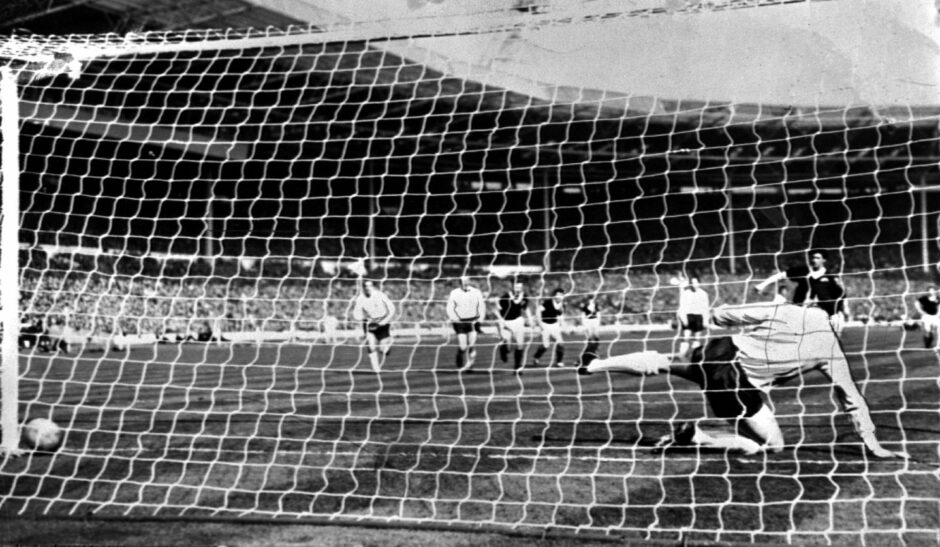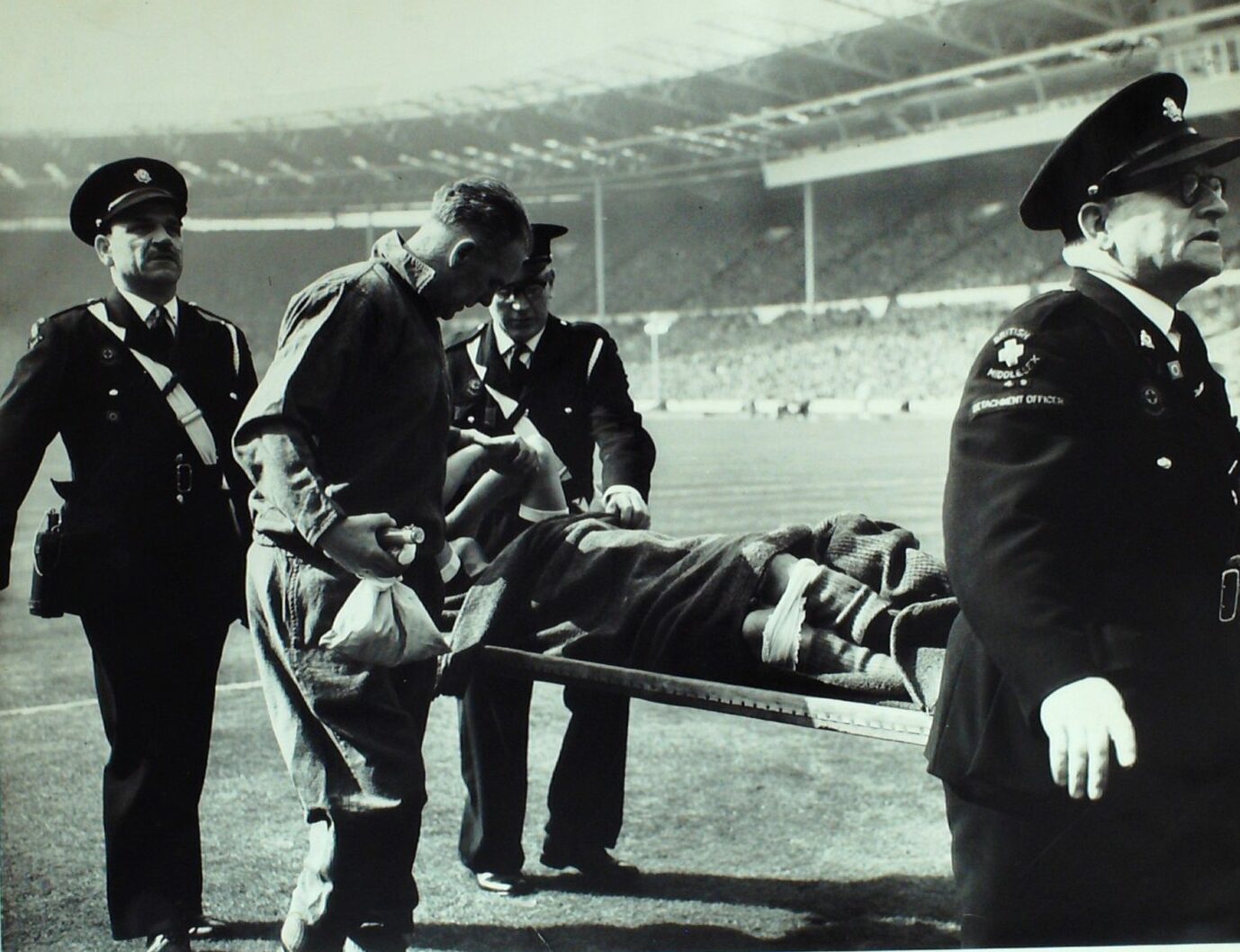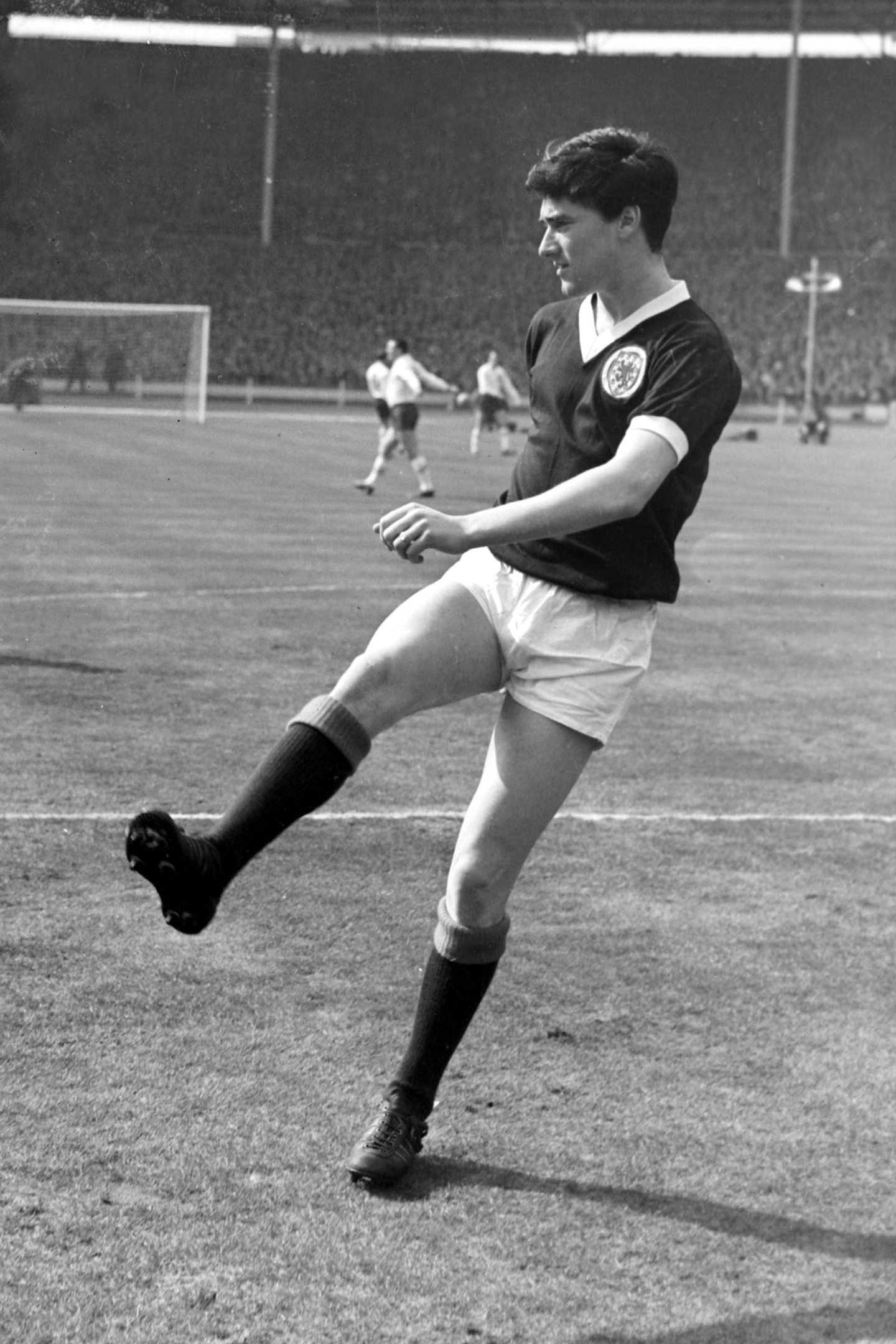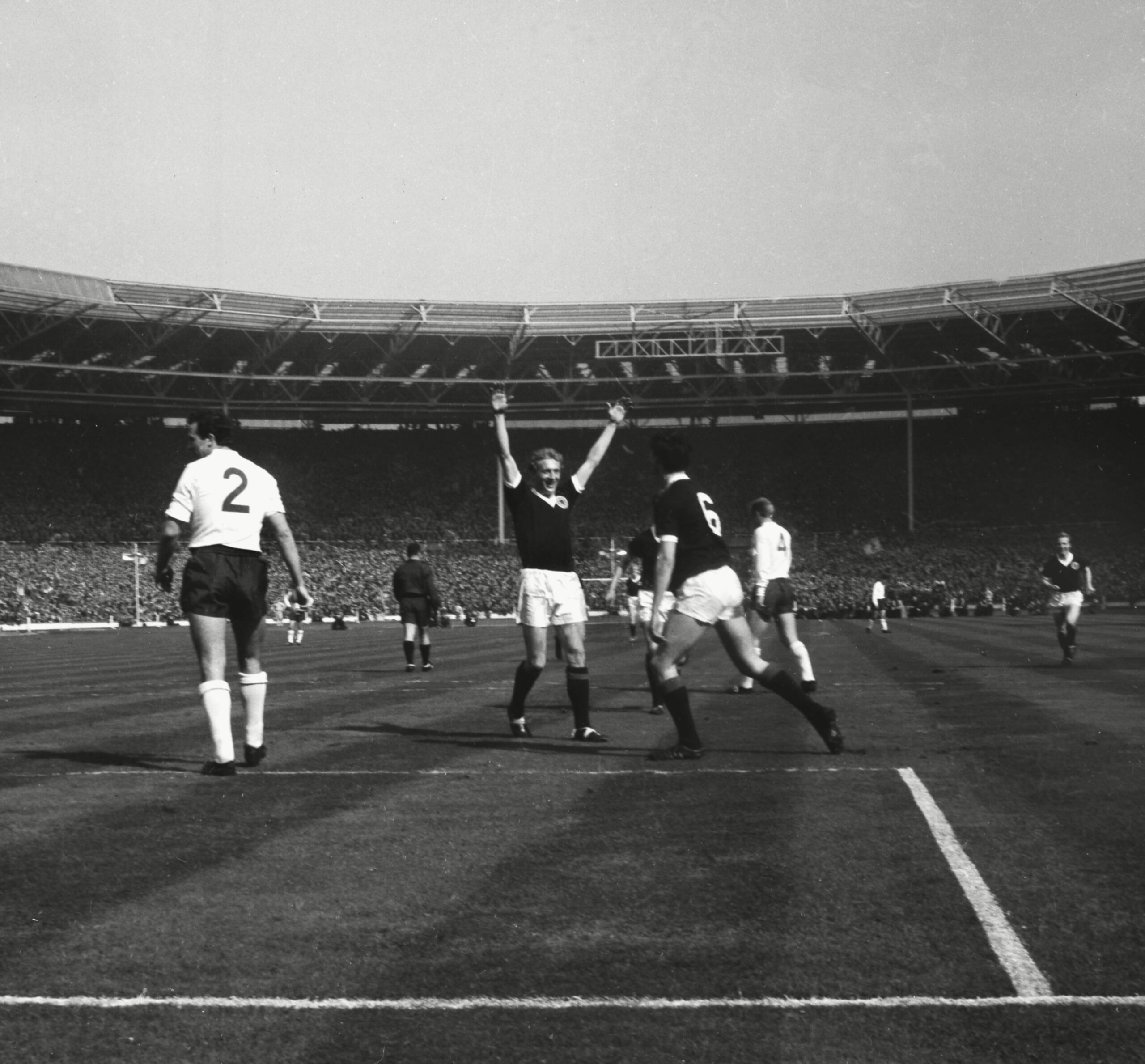
It was the sort of display which had even hardened hacks searching for new ways of paying tribute to the silky skills of a Scottish superstar.
Denis Law remarked later he was “in awe of the way he took control” of the proceedings at Wembley on April 6 1963. Bobby Charlton, one of the England luminaries who spent most of the afternoon chasing shadows, said simply: “He was unstoppable”.
At the climax, there wasn’t any argument that the Player of the Match award should be accorded to Jim Baxter, the mercurial maestro who had grabbed hold of the contest by the scruff of the neck and shaped it with a devastating individual performance.
‘Slim Jim’ not only scored both his country’s goals in their 2-1 triumph – which made partial amends for the 9-3 pasting which England had dealt out when hapless Scotland had come calling two years earlier – but he showed his ability to change the momentum of a game through his sumptuous skills and technical brilliance in the heat of battle.
Scotland suffered grievous early blow
The outcome of that Home International Championship meeting 60 years ago was all the more remarkable because Scotland had to play most of the tussle with only 10 men. After five minutes, their captain and influential full back, Eric Caldow, sustained a multiple leg fracture following a sickening collision with England’s Bobby Smith. (It was broken in three places and the Ibrox man never played for Scotland again).
The Courier reported: “Both players were carried from the field on stretchers during a lengthy delay, but while the Scot was taken to hospital, Smith returned three minutes from the interval to play out the rest of the game limping on the right wing with a badly-bruised knee, which clearly hampered his movement.”
Quite why the FA insisted on this course of action when Smith was only doing himself further damage remains a mystery, but by the time he was introduced, the hosts were trailing 2-0 and were being bewitched, bothered and bewildered by Baxter in what he subsequently described as the finest performance of his 34-cap career.
That’s some statement, considering that the Hill of Beath man is now best remembered for famously indulging in a spell of keepie-uppie against England in 1967 when the Scots claimed a memorable 3-2 success against the newly-crowned world champions.
But, as he admitted, he had been shocked by watching his Rangers colleague, Caldow, leave the Wembley turf in such grievous circumstances and was determined to do all he could to ensure his skipper had some positive news to toast during his hospital stay.
He and his partner-in-creativity Dave Mackay – the Dundee ace with lashings of class – posed myriad problems for their opponents and the old TV pictures highlight the breadth of vision and stunning pace at which Scotland attacked on both flanks.
Baxter made every move look simple
And the crowd of nearly 100,000 – the actual attendance was 98,606 – many of them sporting Saltires and Tartan tammies, soon had plenty to cheer about as their heroes surged into a two-goal advantage.
Norman MacDonald reported in the P&J: “Baxter made every move look simple – the mark of the supreme artist. And, in the 29th minute, he showed his forwards that England’s defence was by no means impregnable.
“Right back [Jimmy] Armfield did his team a real disservice when he attempted to dribble the ball round Baxter. The Scot quickly gained possession, moved inside the penalty area, coolly weighed up the situation and then nonchalantly side-footed the ball into the England net, well out of [Gordon] Banks’ reach. It was masterful.”
He and his teammates were in avaricious mood. They sensed their rivals were toiling to contain them and that this was the ideal time to strike again.
Only two minutes later, the lively, darting and dangerous Willie Henderson was moving towards the England goal when he was brought down by Ron Flowers.
It was a stonewall penalty even in those days when much harder challenges were tolerated than is the case 60 years on. And, with calm assurance, Baxter stepped forward to take the spot kick and despatched it into the net.
England fought back in second half
The Scots were in the ascendancy, both before and after the break, but squandered several opportunities which would have settled the outcome. Law, normally so prolific and effective in a Scotland shirt, endured one of the more forgettable days of his award-studded CV.
Indeed, the P&J correspondent said tartly: “This was the poorest international I have seen Law play and he struggled in every department.”
Yet there seemed little danger of the visitors tripping up until the closing stages when they gifted a goal to England to guarantee a fraught climax to the encounter.
As The Courier reported: “Dundee’s Ian Ure, the magnet for Manchester United and Arsenal, marred an otherwise impeccable display when England scored in the 79th minute. The centre half lunged, but failed to intercept a Smith cross and Bryan Douglas, lying in the middle, strode through the open space to beat [Bill] Brown”.
That sent a few ripples of anxiety around the myriad Scottish supporters, but they were never seriously under threat after that, despite their strikers missing another couple of chances. On another day, they might have notched up four or five goals, but had to be content with a scoreline which looked closer than it actually was.
In the aftermath, the newspapers were unequivocal in their praise for Baxter, who had told Rangers that, at 23, he wanted to leave the club and relocate elsewhere. This prompted the P&J to predict: “The telephone lines between Ibrox and all points south are likely to be busy after Baxter’s brilliant Wembley showing.”
However, he went nowhere fast – or not until 1965 when he joined Sunderland, by which stage the rumours about his relish for after-hours over-indulgence were becoming clear to the biggest clubs who might otherwise have splashed out to buy him.
England verdict was scathing
The response of the English media to their side’s defeat was predictable. They were accused of being one-dimensional, of lacking verve and pace in important positions.
The Mirror concluded: “The team and several selections were an abject failure. Manager Alf Ramsey and his selectors will have to start building all over again. And they will have to show more imagination than they did with this group.”
His reputation was battered and bruised, on and off the pitch.
No wonder Ramsey was no fan of the Scots!
But, of course, he more than made amends in the years ahead.













Conversation